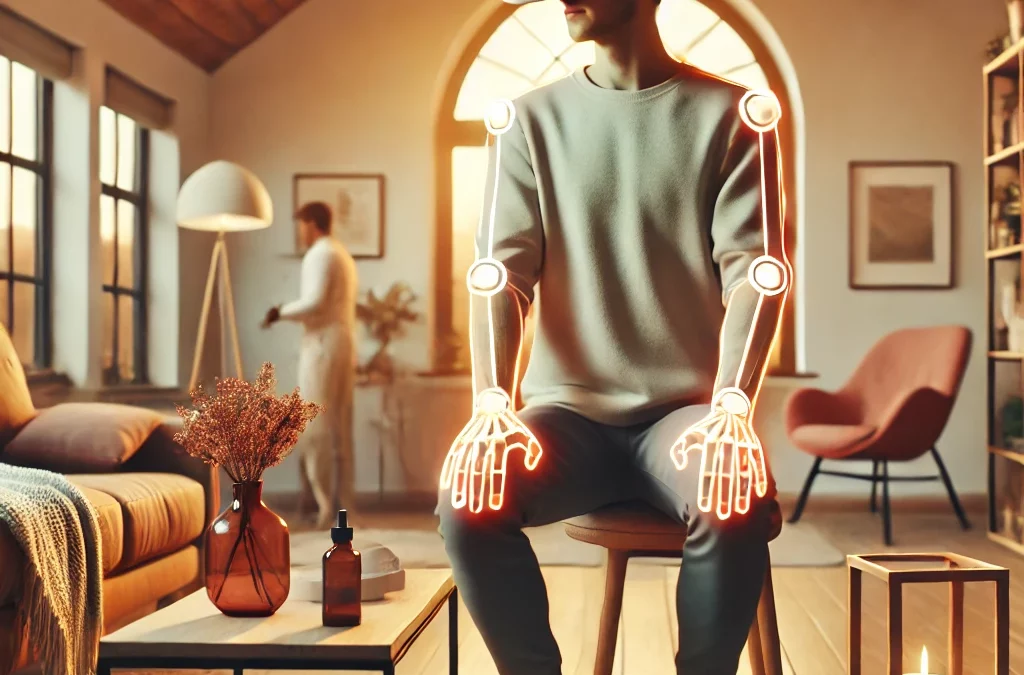- The Patient’s Perspective: How Virtual Reality and Remote Therapy Can Revolutionise Rehabilitation
For many patients, rehabilitation is a vital part of their journey toward recovery. Whether recovering from a stroke, injury, cancer treatment, or managing chronic conditions, the path to regaining functionality and quality of life can be challenging. The traditional methods of rehabilitation, visits to clinics, repetitive exercises, and overcoming mental and physical barriers, have helped many, but there’s room for innovation. Virtual Reality (VR) is now emerging as a transformative tool for delivering these much-needed therapies, offering unique advantages, particularly in remote settings.
- Breaking Barriers: Accessibility and Comfort from Home
For patients undergoing rehabilitation, particularly those dealing with fatigue or mobility issues, traveling to a clinic can be a significant hurdle. Remote therapy through VR can break this barrier by bringing the treatment directly into the patient’s home. Whether it’s someone recovering from cancer, managing upper limb injuries, or regaining strength after a stroke, VR offers the opportunity to engage in therapy from a comfortable, familiar environment without sacrificing the quality of care.
This is not just about convenience, remote VR therapy enables continuity in treatment. Patients who would have otherwise missed sessions due to distance, fatigue, or logistical difficulties can continue their rehabilitation seamlessly. It reduces the strain on caregivers and lessens the feeling of isolation that can often come with being housebound or in rural areas with limited access to specialised care.
- Engagement and Motivation: Turning Therapy into a Positive Experience
One of the biggest challenges patients face in traditional rehabilitation is motivation. Repetitive exercises can feel monotonous and draining, leading to a loss of enthusiasm and, in turn, progress. VR has the potential to make rehabilitation more engaging and enjoyable through gamification. Imagine performing exercises in a virtual environment that feels like a game, where every correct movement is rewarded, and progress is visually represented in real-time.
For many patients, seeing their improvement, whether through avatars that gain strength, visual cues of their muscle movements, or scores tracking their performance, can make a significant difference in staying motivated. This sense of accomplishment is crucial, especially for those who struggle with the emotional and psychological toll of long-term rehabilitation. The gamified aspects of VR therapy offer a new and exciting way to keep patients engaged, helping them stick to their rehabilitation plan.
- Customisation and Personalisation: A Therapy Tailored to You
Every patient’s journey is different, and this is particularly true in rehabilitation. VR therapy’s ability to be highly customised is a key advantage. Whether a patient needs to focus on improving fine motor skills after a stroke or gradually increasing their upper limb strength post-surgery, the virtual environment can be adjusted to their specific needs. Unlike traditional therapy, where resources can be limited and generalised, VR allows for fully personalized experiences.
This customisation extends to the sensory experience as well. Patients can benefit from real-time feedback in the form of haptic (touch) sensations and visual feedback, helping them better understand their movements and progress. This level of interactivity offers a more immersive experience than traditional methods, potentially speeding up the recovery process.
- Maintaining Supervision and Connection: The Best of Both Worlds
A concern for many patients undergoing remote therapy is the loss of direct supervision from a healthcare provider. VR, however, bridges this gap by offering remote therapy sessions that can still be monitored in real-time. Healthcare providers can track the patient’s progress through data collected from the VR system, ensuring that exercises are performed correctly and goals are being met. This means that even in a remote setting, patients receive a high level of supervision, which can boost confidence in the process.
For cancer patients experiencing fatigue, this real-time feedback and oversight are particularly valuable. It not only ensures that the exercises are helping but also reduces the mental load of wondering whether the therapy is effective.
- The Future of Rehabilitation is Here
Although the use of XR (Extended Reality) in healthcare is still relatively new, studies have already shown promising results in rehabilitation, particularly for upper limb recovery. From reducing pain and improving motor function to enhancing patient engagement and motivation, XR technology offers immense potential for the future of healthcare.For patients, the shift toward VR and remote therapy represents a hopeful future, one where rehabilitation is more accessible, engaging, and personalised than ever before. As patient organisations like OAC together with the whole SUN consortium continue to explore and integrate these technologies into their services, we can look forward to a new era in rehabilitation that not only meets patients where they are but empowers them on their road to recovery.

